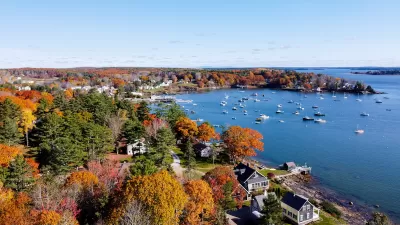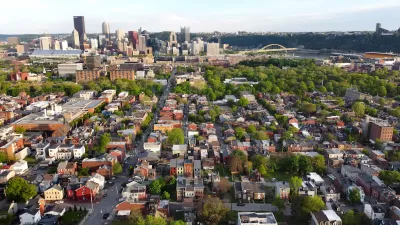The senior population of Erie County, New York, is rising. A 2006 storm revealed difficulties in providing medical services to these seniors because of the sprawled out and cul-de-sac heavy development model. A bill seeks to make that model smarter.
"In 2000, about 20 percent of Erie County's population was over 60 years of age. By 2015, over 25 percent of Erie County's population will be over 60 years of age. There is a slow-boiling pot here that is about to boil the proverbial frog, as roughly 250,000 of our fellow citizens gradually find themselves increasingly in need of the kindness of strangers-strangers like nurses, emergency medical technicians, home healthcare aides, and the other folks whom our insurance and tax dollars will be paying to help us."
"This problem would be a lot easier to address were every empty-nester and retiree to re-migrate back downtown."
"Assemblyman Sam Hoyt has been urging his Assembly colleagues to push back. The larger of the two state legislature chambers favors an end to endless growth in the state's budget for new roads, new sewers, and other new infrastructure that keeps getting spent on ever-spreading suburbs for a static population."
"Hoyt's rationale is simple: With a shrinking population, it makes no sense to continue to invest scarce state funds in roads, bridges, and sewers that the state shouldn't buy and can't afford to maintain."
"Hoyt's bill is an example of the so-called Smart Growth movement that has had growing bipartisan support in Albany, but that so far has been thwarted by the developers' lobby, which would rather keep the sprawl machine going-even if vulnerable populations of elderly people are left ever further from basic services."
FULL STORY: Seniors Stranded in Cul-De-Sacs

Planetizen Federal Action Tracker
A weekly monitor of how Trump’s orders and actions are impacting planners and planning in America.

Restaurant Patios Were a Pandemic Win — Why Were They so Hard to Keep?
Social distancing requirements and changes in travel patterns prompted cities to pilot new uses for street and sidewalk space. Then it got complicated.

Maui's Vacation Rental Debate Turns Ugly
Verbal attacks, misinformation campaigns and fistfights plague a high-stakes debate to convert thousands of vacation rentals into long-term housing.

In California Battle of Housing vs. Environment, Housing Just Won
A new state law significantly limits the power of CEQA, an environmental review law that served as a powerful tool for blocking new development.

Boulder Eliminates Parking Minimums Citywide
Officials estimate the cost of building a single underground parking space at up to $100,000.

Orange County, Florida Adopts Largest US “Sprawl Repair” Code
The ‘Orange Code’ seeks to rectify decades of sprawl-inducing, car-oriented development.
Urban Design for Planners 1: Software Tools
This six-course series explores essential urban design concepts using open source software and equips planners with the tools they need to participate fully in the urban design process.
Planning for Universal Design
Learn the tools for implementing Universal Design in planning regulations.
Heyer Gruel & Associates PA
JM Goldson LLC
Custer County Colorado
City of Camden Redevelopment Agency
City of Astoria
Transportation Research & Education Center (TREC) at Portland State University
Camden Redevelopment Agency
City of Claremont
Municipality of Princeton (NJ)





























